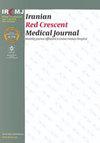Histopathological Evaluation of Endometrial Biopsies in Different Age Groups: A Tertiary Care Experience in Turkey
IF 0.2
4区 医学
Q3 MEDICINE, GENERAL & INTERNAL
引用次数: 0
Abstract
Background: An endometrial biopsy primarily aims to determine endometrial cancer and hyperplasia with atypia at an early stage. Objectives: This study aims to evaluate the indications, histopathological diagnoses, and the number of endometrial biopsies performed in our clinic, according to the age groups of patients, in light of the literature. Methods: A retrospective review was conducted on the file data of 4,965 patients who underwent endometrial biopsy for non-obstetric reasons between 2014-2021. The patients were divided into five groups, according to their age. Pathology diagnoses were classified as benign endometrial pathology, premalignant-malignant pathology, and insufficient for diagnosis. Results: The most common biopsy indication was abnormal uterine bleeding (61.9%), while the most common histopathological result was benign endometrial pathologies (75.3%). Endometrial cancer was also detected in 3% of the patients. The highest diagnosis of benign endometrial pathology among age groups was 96.6% in those below 35. The comparison of age groups in the diagnosis of premalignant-malignant pathology revealed that the highest diagnosis rate was 32.1% in those 65 years and over. Furthermore, the evaluation of the relationship between indications and material adequacy showed that the highest rate of insufficient for diagnosis pathology was in the postmenopausal patient group (34.0%). Moreover, insufficient for diagnosis and endometrial surface epithelium results were highest in patients over 65 (46.7%). Conclusion: Patients aged 55-64 and those over 65 had the highest rate of endometrial cancer and insufficient for diagnosis biopsy results. Therefore, dilation and curettage may be recommended while taking a biopsy from patients in this age group.不同年龄组子宫内膜活检的组织病理学评估:土耳其的三级护理经验
背景:子宫内膜活检的主要目的是在早期确定子宫内膜癌和异型增生。目的:本研究的目的是评估适应症,组织病理学诊断,并在我们的诊所进行子宫内膜活检的数量,根据患者的年龄组,根据文献。方法:回顾性分析2014-2021年4965例非产科原因子宫内膜活检患者的档案资料。这些病人根据年龄分为五组。病理诊断分为子宫内膜良性病理、癌前-恶性病理和不充分诊断。结果:子宫活检最常见的指征是子宫异常出血(61.9%),最常见的组织病理结果是子宫内膜良性病变(75.3%)。3%的患者还检出子宫内膜癌。在35岁以下年龄组中,子宫内膜良性病变的诊断率最高,为96.6%。不同年龄组间癌前-恶性病理诊断率比较,65岁及以上患者诊断率最高,为32.1%。此外,对适应症与材料充分性之间关系的评估显示,绝经后患者组的病理诊断不足率最高(34.0%)。此外,65岁以上的患者诊断和子宫内膜表面上皮结果不充分的比例最高(46.7%)。结论:55 ~ 64岁及65岁以上的患者子宫内膜癌发生率最高,活检结果不充分。因此,在这个年龄组的患者进行活检时,可能建议进行扩张和刮除。
本文章由计算机程序翻译,如有差异,请以英文原文为准。
求助全文
约1分钟内获得全文
求助全文
来源期刊

Iranian Red Crescent Medical Journal
MEDICINE, GENERAL & INTERNAL-
CiteScore
1.16
自引率
0.00%
发文量
0
期刊介绍:
The IRANIAN RED CRESCENT MEDICAL JOURNAL is an international, English language, peer-reviewed journal dealing with general Medicine and Surgery, Disaster Medicine and Health Policy. It is an official Journal of the Iranian Hospital Dubai and is published monthly. The Iranian Red Crescent Medical Journal aims at publishing the high quality materials, both clinical and scientific, on all aspects of Medicine and Surgery
 求助内容:
求助内容: 应助结果提醒方式:
应助结果提醒方式:


